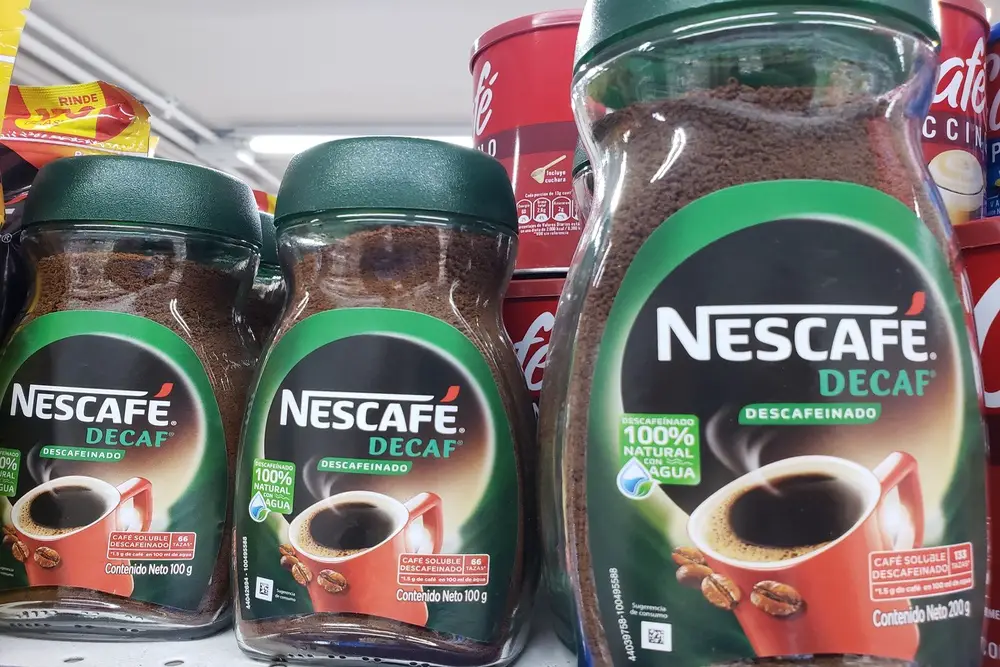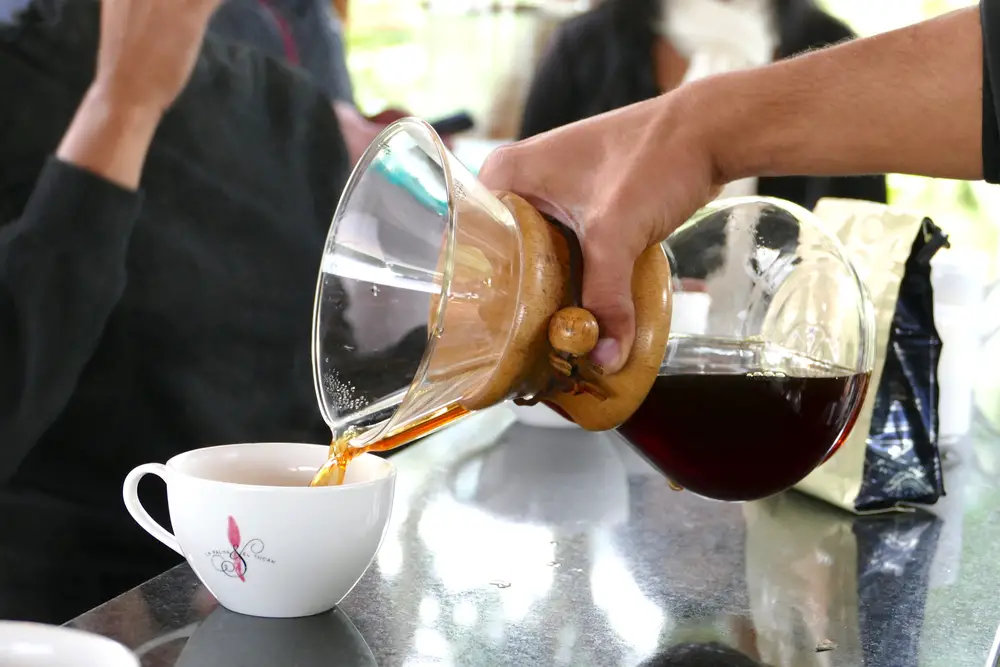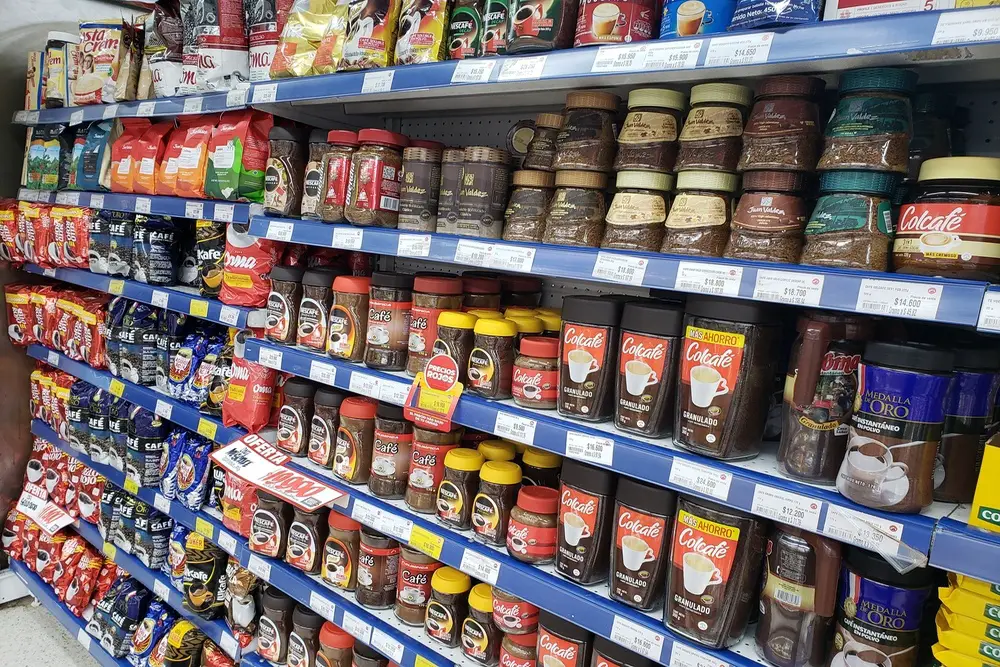If you like coffee but it also causes palpitations, tremors, insomnia or irritability, you should try decaffeinated coffee.
Table of Contents
What is Decaffeinated Coffee?
The coffee we consume every day is primarily made up of a substance called caffeine, a bitter-tasting alkaloid that can act as a central nervous system stimulant.
So, caffeine works by preventing adenosine from binding to its receptor in the brain, which makes us feel awake and unable to sleep. Adenosine acts as a sedative in our system, making it easier for us to sleep and rest.
A coffee without caffeine or with a very low caffeine content is therefore referred to as decaffeinated coffee.
General information about decaffeination
There are currently 4 methods to remove caffeine from coffee beans. First, however, it should be made clear that a coffee does not have to be 100% decaffeinated to be considered decaffeinated.
In countries like the United States, a coffee with 3% caffeine or 97% caffeine is accepted as decaffeinated. To give you an idea, a conventional 12-ounce coffee can contain an average of 180 mg of caffeine.
However, a cup of decaffeinated coffee of the same size only contains about 5.4 mg of the alkaloid. On the other hand, you should be aware that all decaffeination processes have some things in common, for example:
- Decaffeination always takes place when the coffee beans are green, ie have not yet been roasted.
- The decaffeination process is always difficult as the caffeine must be removed without affecting various substances that give the coffee its flavor.
- in decaffeination because the caffeine is soluble in this liquid. The problem is that the water alone can also remove other substances that shouldn’t be removed from the coffee, such as B. certain sugars and proteins.
How is the caffeine removed from coffee?
Decaffeination process in the early 20th century, in 1903 to be precise. Sometime later and within 3 years this inventor had already patented the Roselius decaffeination or Roselius process.
Back then, boiling water was poured over the green coffee beans. This water was also heavily saturated with salt to increase its absorption power. Benzene was also added to the liquid solution, so this chemical agent completed the extraction of the caffeine from the coffee bean.
However, benzene has fallen out of use as it has been shown to be a carcinogen, i.e. a compound that increases the risk of developing cancer. However, there are currently 4 methods of decaffeination.
These methods can be divided into two broad categories: Solvent-based decaffeination, which is further broken down into direct and indirect decaffeination.
Solvent -free decaffeination
Solvent-based processes use substances such as methylene chloride and ethyl ethanoate. These chemicals have been approved by the FDA (Food and Drug Administration of the United States) as harmless to health.
Solvent based direct decaffeination
In this process, the coffee beans are softened by soaking them in water or by exposure to steam. When ready, they are contacted with the solvent, either methylene chloride or, more commonly, ethyl ethanoate.
direct decaffeination with ethyl ethanoate is the most natural method, since this substance occurs naturally in fruit. In general, this process can take around 10 hours, and at the end the beans are steamed to remove excess solvents.
Solvent-based indirect decaffeination
Indirect decaffeination is the most commonly used process to remove caffeine from coffee beans. So, indirect decaffeination starts the same way as the direct process, i.e. the coffee beans are steeped in water, except this time the water is boiling.
This way, all of the water-soluble ingredients are extracted, including caffeine and other substances that make up the traditional coffee flavor. The beans are then removed from the water. The caffeine is now mostly in the water and not in the coffee.
Methylene chloride is then added to the water and heated to boiling point to evaporate both the solvent and the caffeine. Then the coffee beans are put back into the water mixture so that the coffee is impregnated with the other substances that remained in the solution.
never comes into direct contact with the solvent during the entire decaffeination process.
Decaffeination with carbon dioxide
This method uses carbon dioxide (CO2) instead of a solvent to remove the caffeine from the coffee beans. This is because CO2 acts selectively on the caffeine, meaning it only removes that component while leaving the others intact.
The coffee beans are placed in a stainless-steel container called the extraction container. In this container, the coffee beans are soaked with water and then mixed with CO2.
A pressure of up to 1,000 pounds per square inch is then applied to the interior of the container to convert the gaseous CO2 to a liquid state.
In this way, the CO2 can extract the caffeine from the beans without affecting the other components that make up the coffee’s flavor, since the latter are larger molecules that are not entrained.
The caffeine-laden CO2 is then transferred to another vessel called the absorption chamber, where the pressure is reduced and the CO2 returns to its gaseous state and the caffeine evaporates.
The decaffeinated CO2 is then stored in another container for later reuse.
Swiss decaffeination
This method of decaffeination is considered the cleanest, as it does not use any chemical solvents (other than water) to remove the caffeine. As with all other methods, the process begins with soaking the green coffee beans in water.
However, instead of a solvent, an extract of green coffee is added. This combines water and coffee extract into one solution, which is then passed through activated carbon filters that separate the caffeine from the mixture.
This process is repeated several times until the coffee beans are 99% decaffeinated. For most commercial coffee brands, Swiss decaffeination is rare. However, it is the decaffeination process that is used by organic coffee brands.
Note: Although this decaffeination process was invented in Switzerland in 1933, it was not until 1988 that it became a commercial process, which is now primarily being developed in Canada.
Which decaffeination method best preserves the coffee’s flavor?
It is difficult to say which decaffeination method can be used to obtain a taste similar to traditional coffee, i.e. coffee with caffeine. Several coffee experts claim that decaffeinated coffee just doesn’t taste like regular coffee.
However, some claim that Swiss decaffeinated coffee best preserves the flavor of the coffee because, as we have already seen, it is made with just water. However, there is something to consider: although caffeine adds much more flavor to coffee, the traditional flavor of this drink is achieved through the roasting process.
Even if the beans are decaffeinated, the flavor of the drink can be very good if roasted properly.
Decaffeinated coffee specialty
There are several brands of decaffeinated coffee that are sold as specialty coffees. This is possible when the following 3 factors come together:
- Good quality beans.
- Swiss decaffeination process (disputed).
- Good roasting process.
So, most premium decaffeinated coffee brands excel at these 3 factors, and while the decaffeination process varies, the Swiss method is most likely to be used.
On the other hand, it is important to remember that decaffeination often uses poor quality beans, which is why it is commonly said that decaffeinated coffee does not taste good.
However, there are brands that select excellent quality beans for decaffeination and roasting. So, it can be said that the taste of decaffeinated coffee depends to a large extent on the processing method used by the manufacturer.
Benefits of Decaffeinated Coffee
Traditional, i.e. caffeinated, coffee can cause tremors and anxiety in some people who are very sensitive to this alkaloid.
Also, pregnant women and people suffering from caffeine addiction should choose other drinks. So here are some reasons why you might want to start drinking decaffeinated coffee.
Decaffeinated coffee consumption may reduce the risk of type 2 diabetes mellitus
In 2017, the British Medical Journal published an article suggesting that the antioxidants in coffee may help reduce the risk of prostate, skin, liver, leukemia, uterine and oral cancers.
Coffee is high in antioxidants and polyphenols that effectively neutralize free radicals. This leads to a reduction in oxidative stress, which is a factor in the development of various diseases such as diabetes mellitus and cardiovascular diseases.
So, when you drink decaffeinated coffee, you can get the nutritional benefits of coffee without the harmful effects of caffeine.
You can drink decaffeinated coffee all day long
According to the FDA (US Food and Drug Administration), the recommended daily maximum amount of caffeine for an adult should not exceed 400 mg.
This means that we shouldn’t consume more than 5 cups a day. However, if you drink the same number of cups of decaffeinated coffee, you will have a much lower amount of caffeine.
However, try to eat a balanced diet and most importantly, limit the amount of sugar you add to your coffee. Because too much sugar is more harmful than too much caffeine.
Decaffeinated coffee causes less gastroesophageal reflux
The caffeine in coffee causes the stomach to produce more acid, which can increase reflux.
Decaffeinated coffee also causes heartburn, but to a lesser extent
It can therefore be a good alternative for those who cannot live without coffee.
Decaffeinated coffee drinks are better for your heart
The stimulating effects of caffeine can worsen heart problems, such as irregular heartbeat. So, if you don’t want to give up coffee, you can drink this decaffeinated drink.



